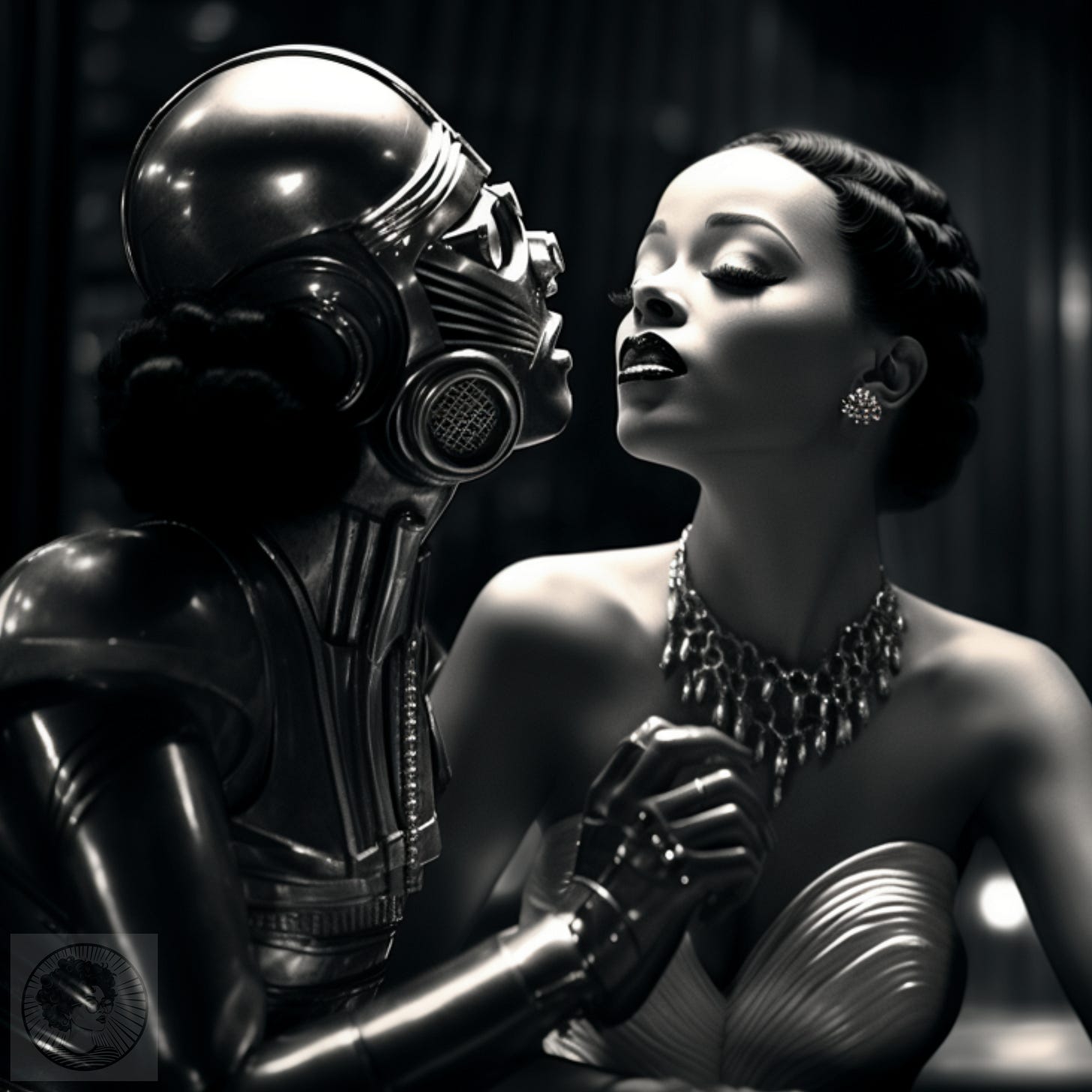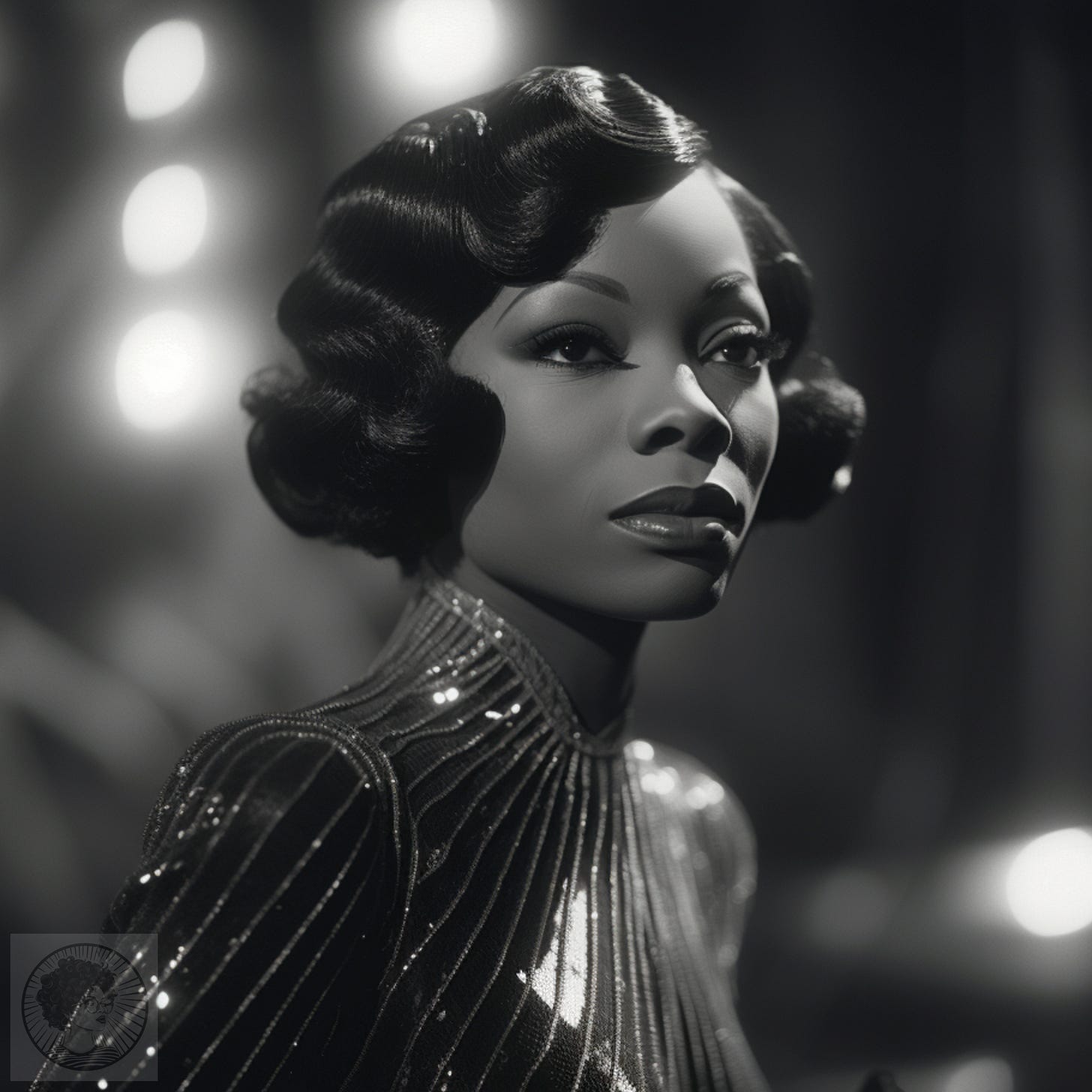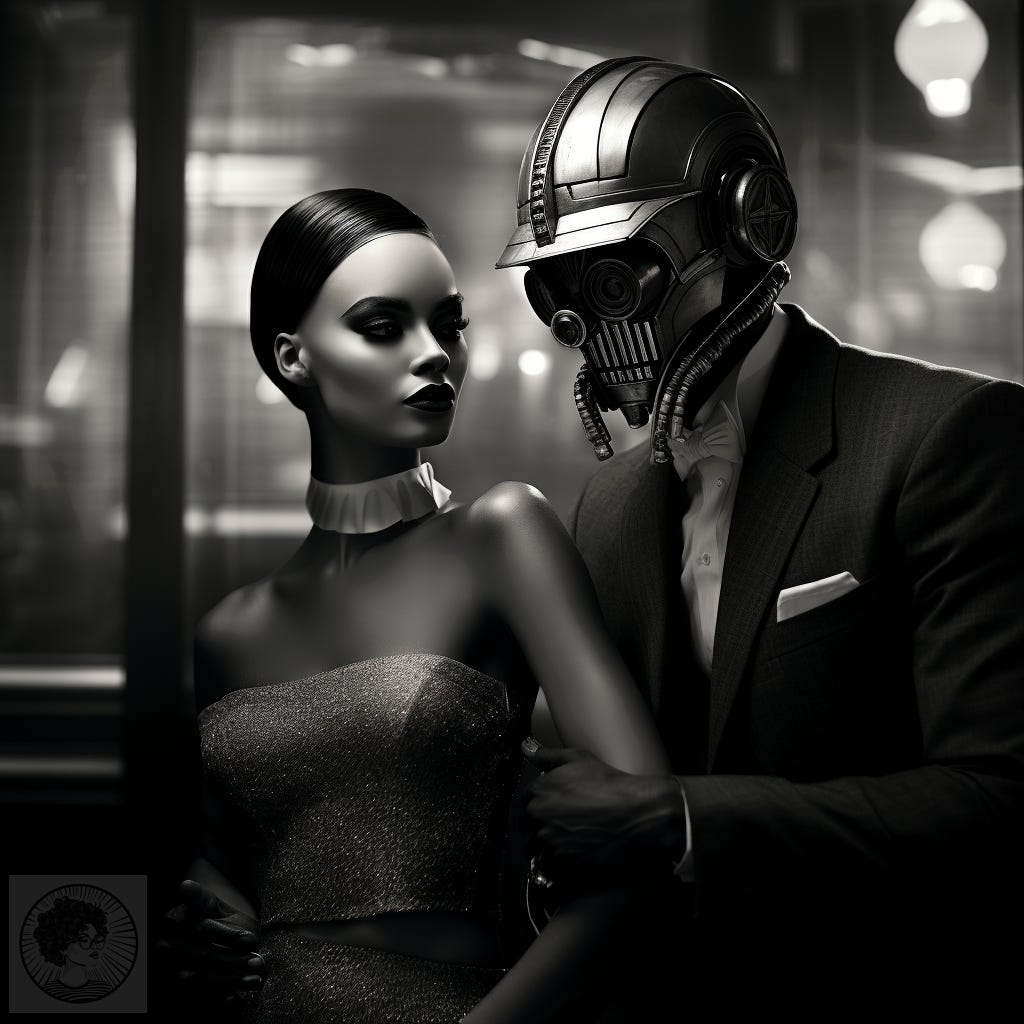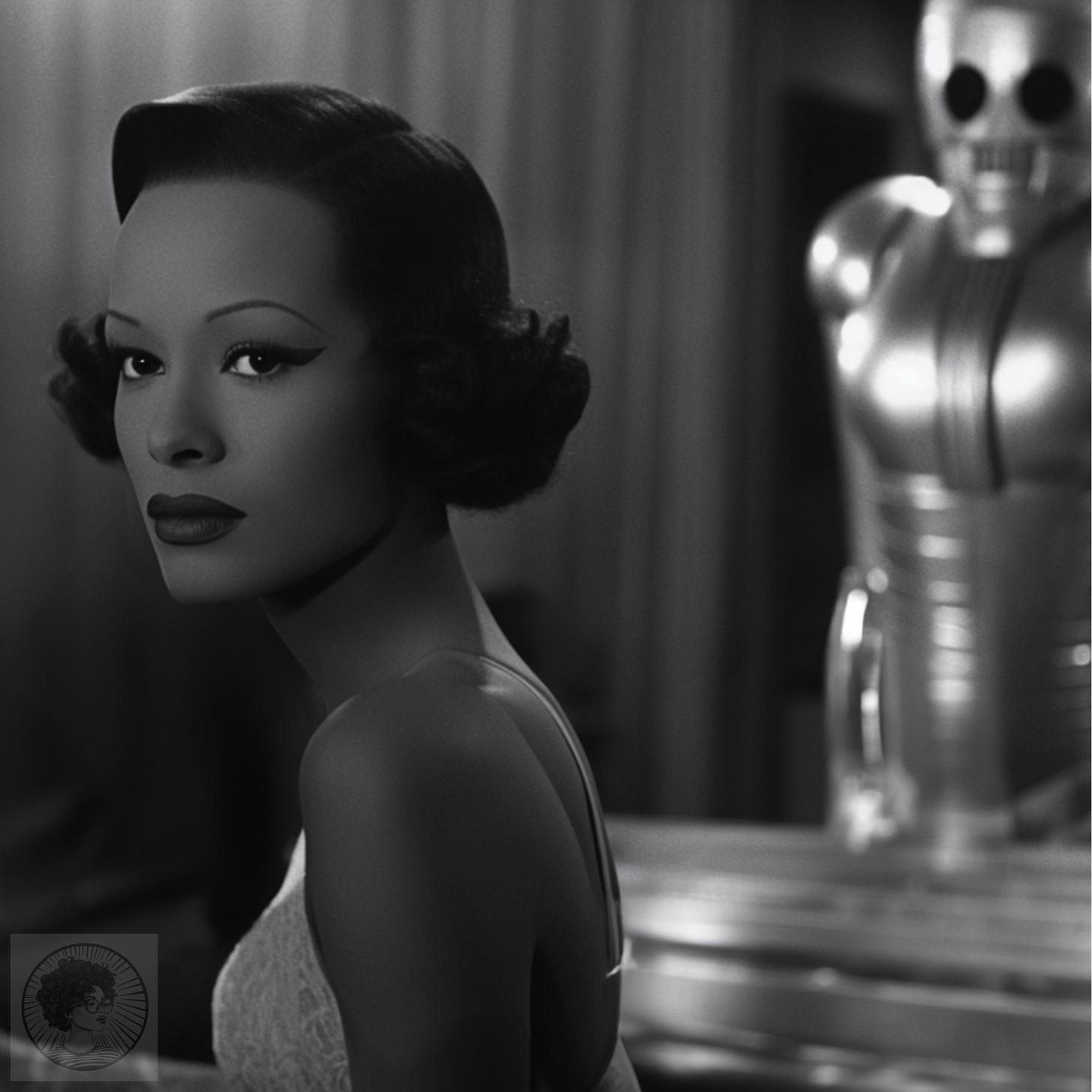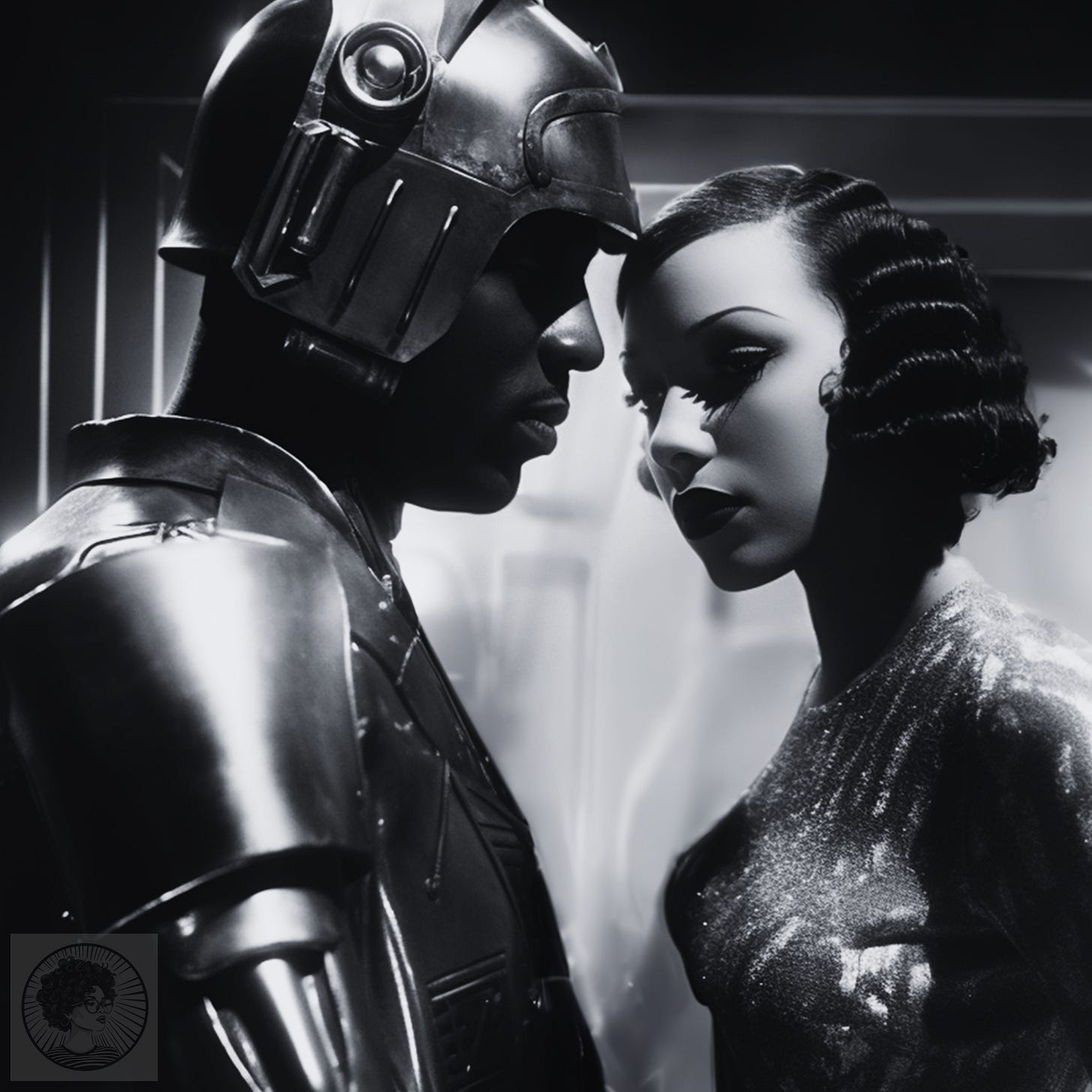Harlem Nocturne
Robots are slow dancing in a Harlem speakeasy and there's been a murder.
We’re in a smoky speakeasy, viewed through a smudged lens. The club is dark, and Harlem Nocturne is shuffling into its final melancholy chord. Little Esther Philips, a 13-year-old musical prodigy conscripted into sirenhood, is waiting in the wings to sing her hit, Double Crossing Blues, backed by the Johnny Otis Orchestra. She's fidgeting, tugging up a heavy, strapless dress that keeps sliding southward. She’s about to be inducted into a sorority of lost little girls with women's voices who sing about things they ought not to know about, things nobody should have taught them.
Johnny Otis quiets the room. He’s Greek, but he ended up Black, somehow, clocked as a man who could pass for white but didn’t instead of a man who was doing everything in his power to pass in the opposite direction. This uneasy place is the best possible home for his brand of ambiguity. In here, nobody’s outsides match their insides.
Out in the crowd, settled around the tables and artfully posed at the bar, people are meeting and pretending to fall in love. The women are sophisticated, elegant, with gleaming Marcel waves and beaded gowns.
The men are robots.
The players are settling into place. All we need is a murder.
imagine/African American robots, glamour, 1920s, Harlem renaissance, art deco, high gloss, moody lighting, romantic, film noir --v 5.0
There is tension in these images. The poses are unnatural and stylized, a film noir pantomime that dramatizes the interplay between a blocky, reluctantly longing male body and a sinuous, elusive female body, presented for visual consumption. Large, imposing, and strong, the male robots are forever closing the space between their bodies that the women create when they step back for air. The male robots are always having sudden moments of clarity where all the clues click into place. The human women are thinking about whatever they can exchange for safety and how to get as much of it as they can.
Some women’s skin is unnaturally pale and matte. The robots can’t tell that those women are caking their faces with layers of powder so that creamy skin with just a hint of coffee fades to just plain cream. These women are dancing on that razor blade of ambiguity where Johnny Otis is perched. Their clothes are expensive, and their diamonds are the real deal.
The band segues, appropriately, from Double Crossing Blues into Mistrustin' Blues.
Are we really in Harlem? Is it really night? There are no windows in these images, and what little light there is is always artificial. The outside is tightly walled away. But that doesn't mean it's safe in here. This is where the danger is.
There's been a murder, and every single image hints at a body, lying just out of frame. There may be blood on the robots' hands, but their metal fingers are dark, so it's hard to tell.
A metal man slowly sips a drink, drawing out the moments before a fight. A slender woman, dripping in the gleaming jewels her dead husband hung around her neck, reaches out languidly, fingers just stopping short of a metal shoulder, or folds herself, gingerly, inside rigid arms.
You can just about smell these pictures. They smell like cigarette smoke, or diesel exhaust, or that acrid steam that rises when hot steel meets ice-cold water.



